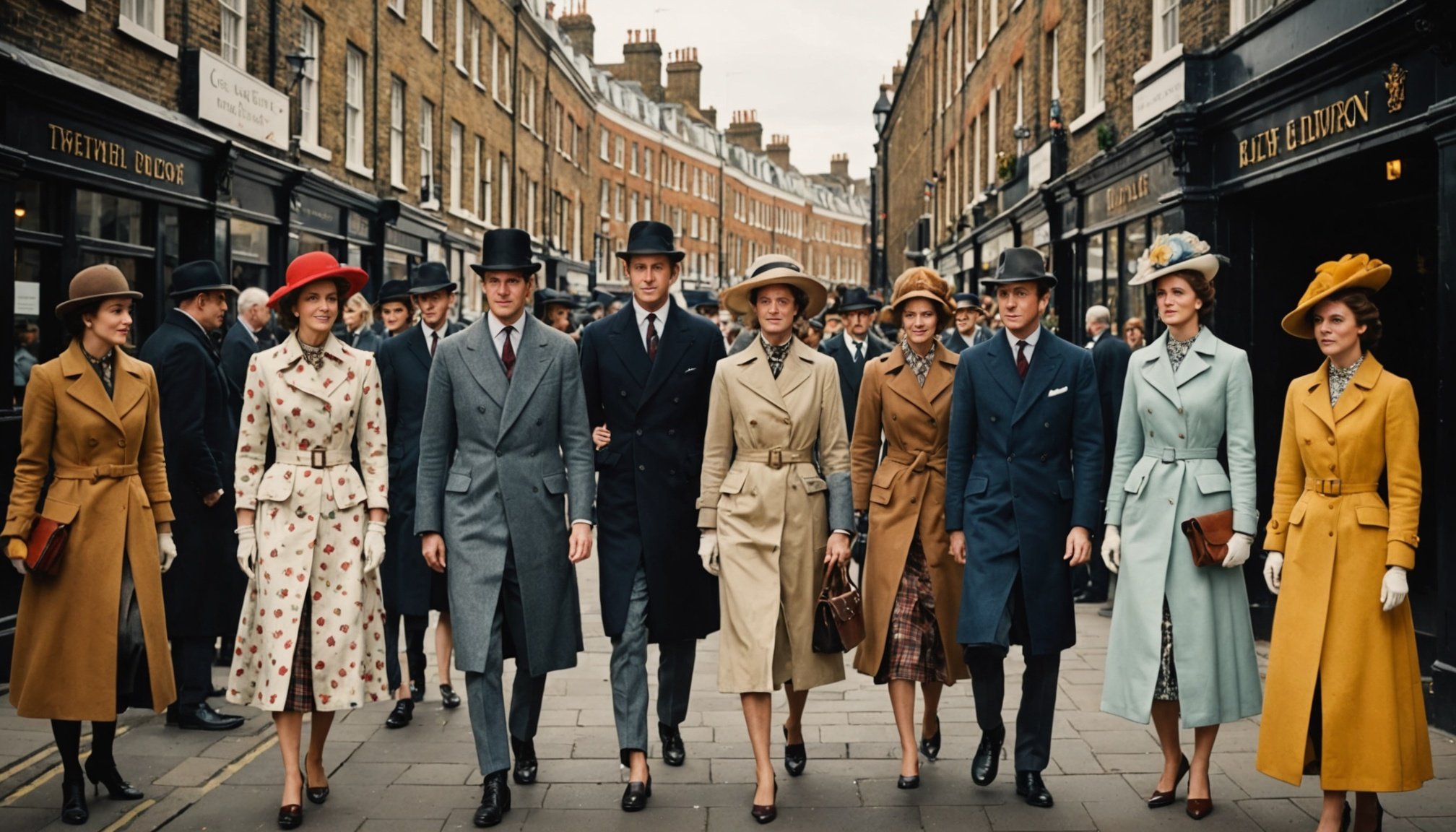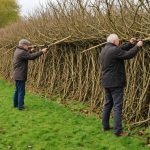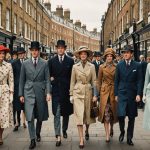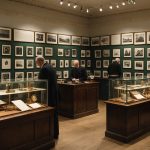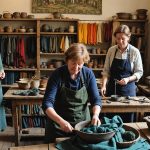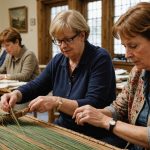Iconic Fashion Museums in London
London is home to a wealth of fashion museums that celebrate its vibrant fashion heritage. One such treasure is the Victoria and Albert Museum. Known for its extensive fashion collection, the V&A offers a deep dive into fashion history through its permanent exhibits. Visitors can explore garments dating back to the 1600s, featuring celebrated designers and key fashion movements.
Just a stone’s throw away, the Museum of London complements the vibrant scene with its dress and textile collection. It showcases London’s fashion heritage through garments that represent different eras and societal changes. Unique pieces reflect both everyday life and high-fashion history.
Also read : Discover the Charm of London”s Historic East End: Join a Guided Walking Tour of Its Iconic Markets!
These museums also play host to temporary exhibitions that focus on both contemporary and historical fashion. This dynamic approach keeps the content fresh and relevant. Enthusiasts have a chance to see the latest in fashion innovation alongside time-honoured classics. With these fashion exhibitions, the curious are encouraged to engage with both the past and future of fashion, making London a key destination for style aficionados. Whether you’re exploring intricate Elizabethan gowns or avant-garde creations, these museums abreast of historical narratives offer an insightful journey into the world of fashion.
Historic Fashion Districts
London’s Fashion Districts offer a rich tapestry of shopping heritage and style evolution. Central to this is Savile Row, renowned for its bespoke tailoring tradition. Here, skilled artisans have handcrafted suits for discerning clientele, cementing its status as a bastion of unyielding quality and sartorial excellence.
Additional reading : Discover the Best Places in the UK to Master Traditional English Hedgelaying Techniques
Another epicenter of innovation was Carnaby Street during the swinging 60s. It was a vibrant hub for youth culture and bold fashion experimentation. This street became synonymous with a London Style that influenced global trends. Bold patterns and eclectic designs became emblematic of cultural shifts, placing London at the forefront of fashion.
Covent Garden, meanwhile, is peppered with boutiques that weave together the threads of fashion legacy. These stores cater to a blend of classic elegance and contemporary flair, offering a unique fusion that reflects the area’s enduring influence on style. Recognized not just for clothing but also for shaping identities, Covent Garden remains a fashion destination with a storied past and a promising future.
In essence, these districts are more than mere commercial spaces; they are theatres of creativity, innovation, and tradition that continue to captivate and inspire.
Fashion Events and Exhibitions
When it comes to Fashion Events, London Fashion Week is a standout, showcasing cutting-edge trends that shape the global fashion scene. As one of the “Big Four” fashion weeks, it stirs substantial buzz with blockbuster runway shows, influential talks, and inspiring exhibitions. London’s vibrant fashion landscape thrives due to this pivotal event, drawing designers, media, and buyers from around the globe.
Beyond the catwalk, cultural exhibitions at Somerset House offer profound insights into fashion’s evolution. Somerset House annually hosts notable exhibitions that explore the interface between fashion, art, and history, capturing the imagination of its visitors. These exhibitions are renowned for presenting iconic fashion moments and pioneering designers through engaging narratives and visuals.
Moreover, London’s dynamic fashion culture is celebrated through pop-up fashion events and markets. These events provide platforms for local designers to shine, fostering creativity and community engagement. Pop-up shops brim with unique styles, offering exclusive designs directly from designers passionate about their craft. Shoppers and enthusiasts alike revel in these gatherings, bridging the gap between designers and fashion enthusiasts. Through such diverse fashion events, London remains a vibrant and innovative hub in the fashion industry.
Influential Fashion Landmarks
Fashion landmarks hold profound cultural significance, serving as the epicentres of innovation and tradition in the fashion industry.
London College of Fashion
The London College of Fashion is pivotal in shaping stylistic evolution. Known for fostering creativity, it has been at the forefront of fashion education, influencing countless designers. This institution emphasizes experimental learning and innovative design, offering a dynamic platform where new trends emerge.
British Fashion Council’s Headquarters
Meanwhile, the British Fashion Council’s headquarters is another pillar of fashion landmarks. This site is integral to promoting British fashion globally. It supports emerging talent and facilitates dialogue among key industry players, thus playing a crucial role in trendsetting and establishing the UK as a fashion powerhouse.
The Royal Exchange
The historical significance of the Royal Exchange in fashion commerce cannot be understated. Once a bustling centre for merchants, it has evolved into a prestigious retail venue. This location reflects the evolution of fashion commerce, demonstrating how fashion landmarks continue to influence and adapt to the changing dynamics of the industry.
Exploring these sites offers insight into their lasting cultural impact and ongoing influence on the fashion world. Each landmark provides a unique perspective on the diverse tapestry of fashion history and its future directions.
Unique Fashion Experiences
Fashion enthusiasts searching for unique fashion experiences in London can indulge in an array of engaging activities. From fashion-focused walking tours to hands-on workshops, the city offers a plethora of opportunities for style lovers.
One of the highlights is the fashion-focused walking tours. These tours provide an extensive overview of iconic fashion landmarks and players in the industry. Expect journeys through areas like Soho and Shoreditch, where street style is vibrant and distinct.
Meanwhile, those seeking a more interactive experience might consider DIY fashion workshops. Local designers host these workshops, offering a hands-on chance to learn techniques such as tailoring or fabric dyeing. It’s a perfect way to gain insight into the creative processes behind fashion design while expressing individual style.
For those with a penchant for the past, vintage shopping tours offer an absorbing adventure. Guided by experts, these tours lead you to hidden gems and treasure troves of iconic vintage pieces. Whether you’re an enthusiast or a casual shopper, these tours craft an unforgettable fashion experience in the heart of London.
Embrace these immersive options to truly experience London’s bustling fashion scene, blending both learning and leisure.
Fashion Literature and Archives
Fashion literature and archives form a vital bedrock for research and exploration in the field. The British Library is a prestigious resource, offering an expansive collection dedicated to fashion-related content. It houses historical tomes and contemporary works that pave the way for scholarly pursuits. Researchers will find fashion books and essays that chronicle the unique trajectory of British fashion history, providing insights into past trends and cultural impacts.
Notable publications found within these archives include seminal works on iconic British designers and movements. Such works not only help understand fashion’s evolution over time but also link historical developments to present-day influences.
The Fashion and Textile Museum in London also plays an important role in the realm of fashion literature. Its archives comprise of invaluable research resources, benefiting historians, students, and fashion enthusiasts alike. The archives are meticulously curated, ensuring access to a trove of clothing patterns, designer sketches, and textiles that reflect different eras. These resources are indispensable for those looking to delve deep into how fashion intertwined with societal changes. They enable a comprehensive analysis, offering a practical avenue for exploring past and current fashion phenomena.
By utilising these resources, researchers can piece together a full picture of fashion’s vibrant history and its continuous evolution.
Sustainable Fashion Initiatives
The London fashion scene is rapidly embracing sustainable fashion, significantly influencing the global industry. This shift is spearheaded by local designers focusing on eco-friendly practices. Among these sustainable fashion brands, Stella McCartney stands out, merging ethical production with high fashion appeal. Additionally, stores like Beyond Retro have become iconic for offering thrifted treasures, promoting recycling in fashion.
Eco-fashion exhibitions have also played a crucial role in increasing consumer awareness. Events such as the Sustainable Fashion Show spotlight innovations in ethical design and production. These shows encourage consumers to consider the environmental impact of their fashion choices, boosting demand for responsibly made garments.
Furthermore, thrift shops and vintage stores have evolved beyond niche markets to become mainstream shopping destinations in London. Establishments such as Rokit provide curated selections of pre-loved clothing, appealing to fashion-forward individuals seeking unique, sustainable pieces. This trend underscores a cultural shift toward valuing the uniqueness and minimal environmental impact of second-hand shopping.
These collective efforts are significantly shaping consumer habits, making sustainable fashion not just a trend but a permanent transformation within the London fashion landscape.

